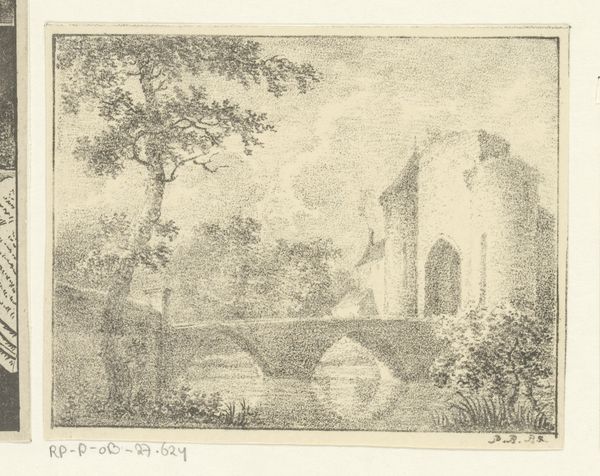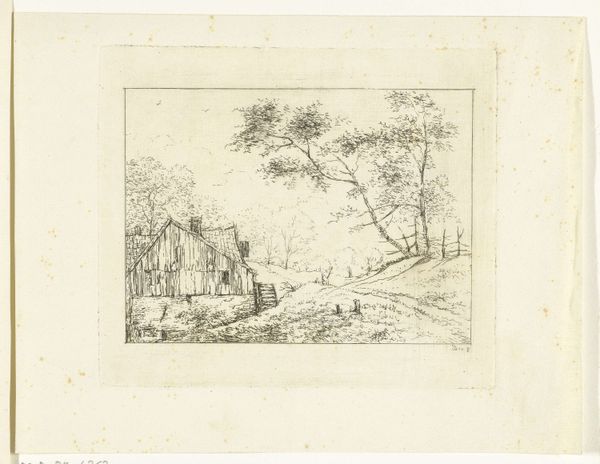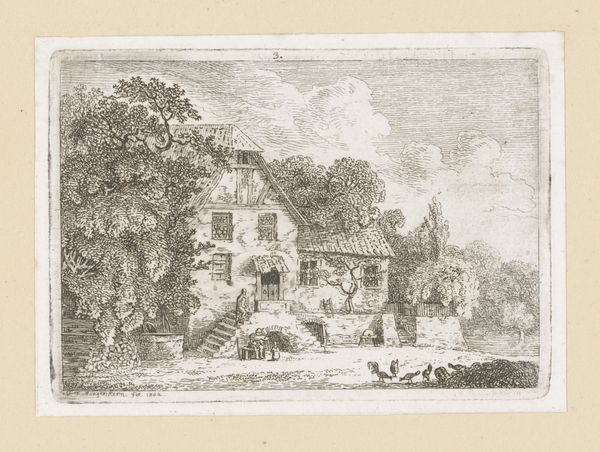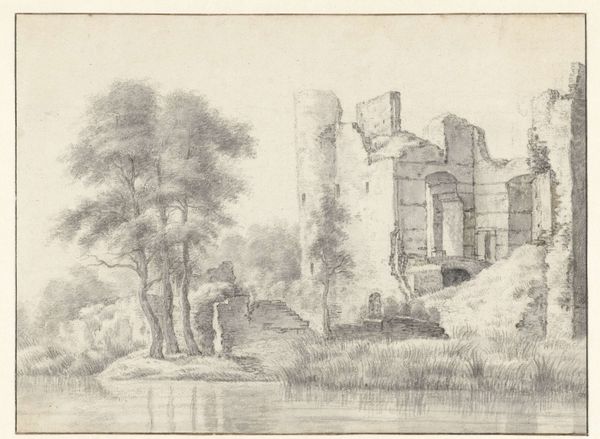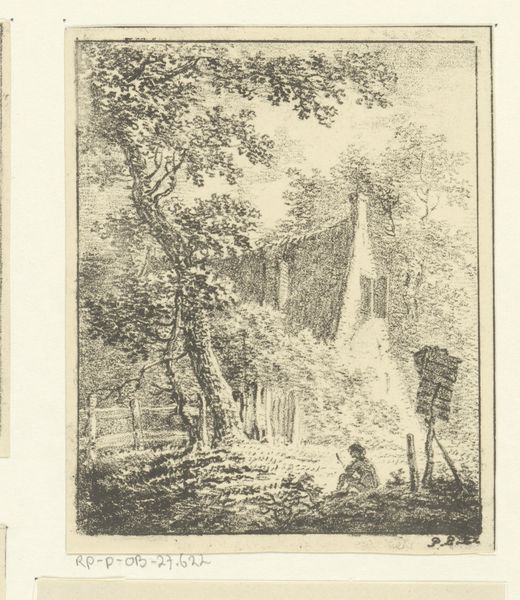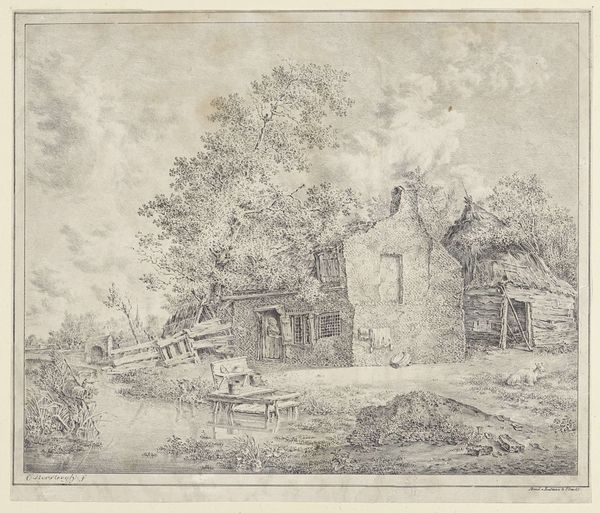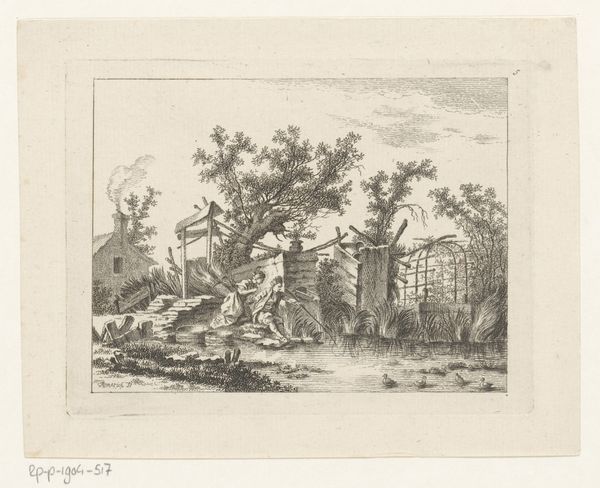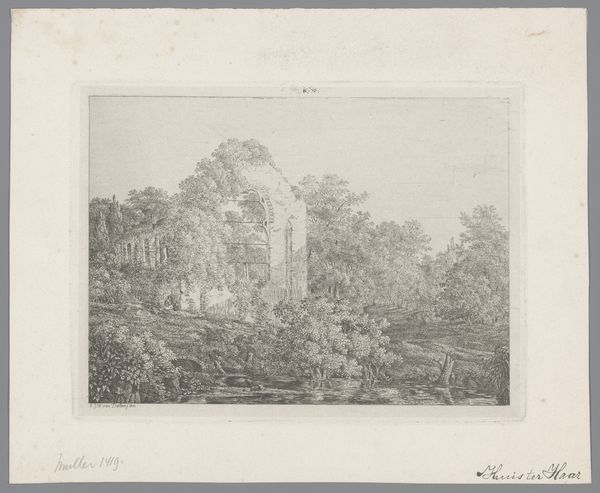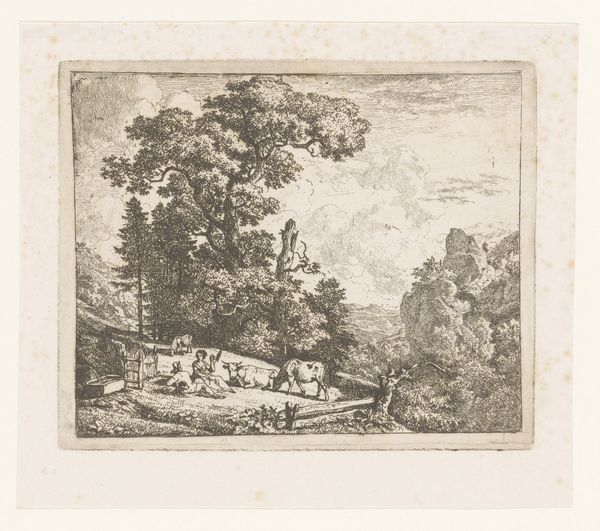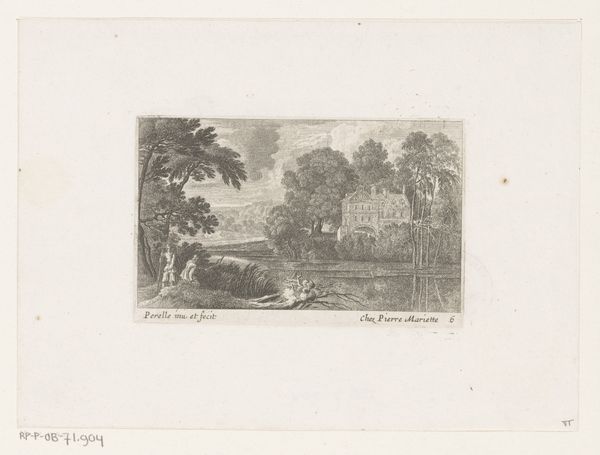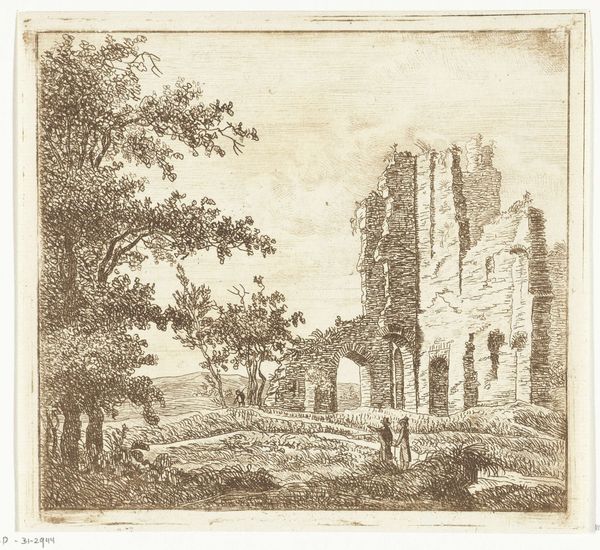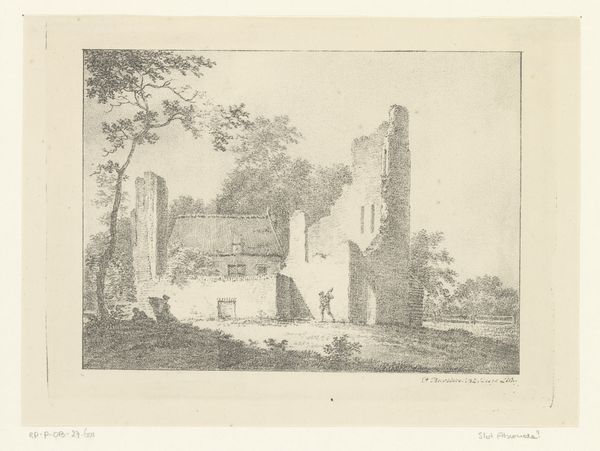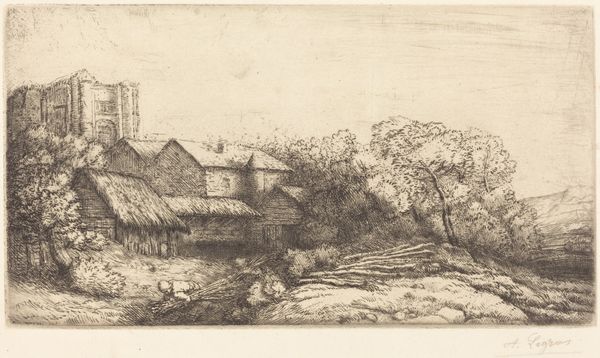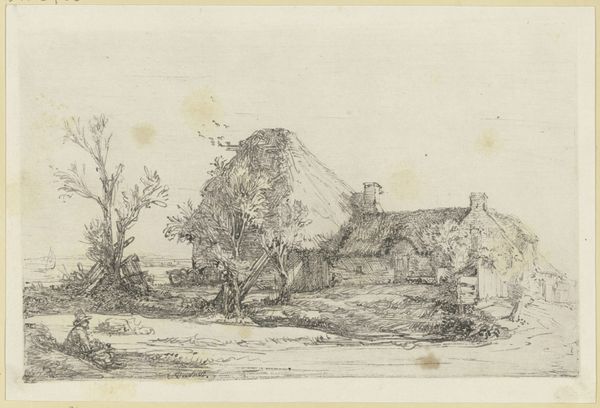
drawing, print, graphite
#
pencil drawn
#
drawing
#
light pencil work
# print
#
old engraving style
#
landscape
#
romanticism
#
graphite
#
pencil work
Dimensions: height 100 mm, width 127 mm
Copyright: Rijks Museum: Open Domain
Pieter Barbiers’ landscape etching features a bridge and a fort, common motifs in Dutch art. These elements transcend mere geography; they symbolize connection and security, deeply rooted in the Dutch psyche, particularly during times of conflict and transition. The bridge, an age-old symbol, reappears throughout history as a metaphor for transition. Consider the Roman pontifex, the bridge-builder, a sacred role linking the earthly and divine realms. Here, it mirrors the shifting landscapes of the Netherlands as it navigates both land and water. The fort is a recurring symbol representing defense and stability. The interplay between these symbols speaks to the delicate balance between movement and stability. Observe how these enduring symbols are not static, but undergo constant evolution, shaped by the collective memory of a culture. The fort and bridge aren’t just architectural features; they’re powerful forces that engage us on a subconscious level, evoking deep emotional responses that transcend time. As you delve deeper into art, note how these images have resurfaced, evolved, and taken on new meanings.
Comments
No comments
Be the first to comment and join the conversation on the ultimate creative platform.
